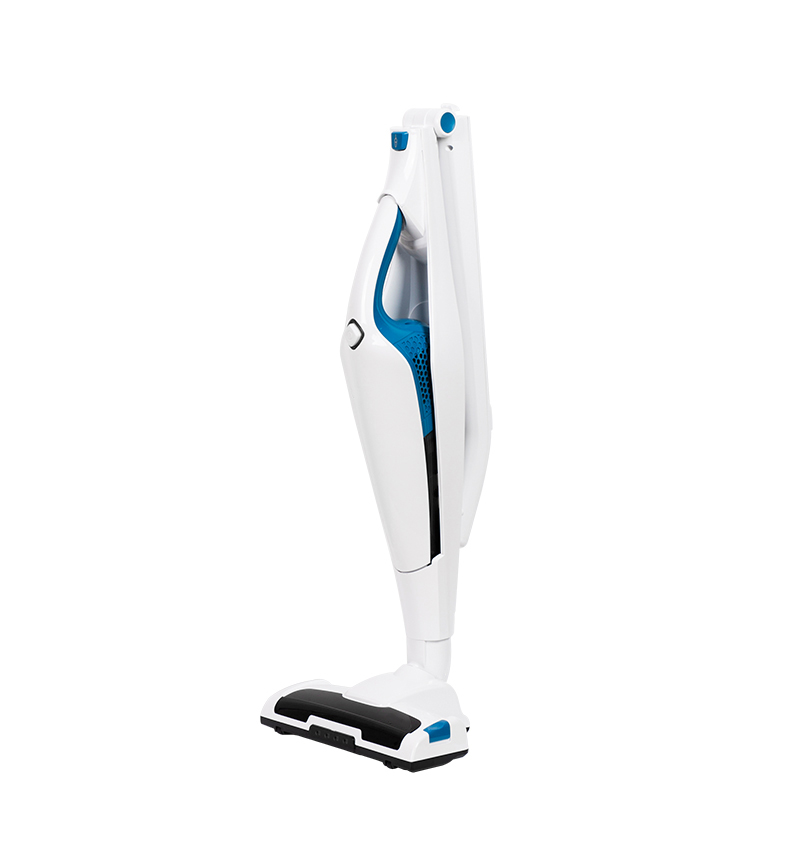The high efficiency of the motor of a cordless vacuum cleaner mainly depends on technical optimization and design innovation in many aspects. Here are some key factors:
Motor type and technological innovation
Brushless DC motor (BLDC): Cordless vacuum cleaners generally use brushless DC motors, which have higher efficiency and lower energy consumption than traditional brushed motors. Brushless motors use electronic commutators instead of mechanical commutators, which reduces friction and wear, thereby improving energy conversion efficiency.
High-performance magnets: The use of high-performance permanent magnet materials, such as neodymium iron boron (NdFeB), can significantly enhance the magnetic field strength of the motor, thereby improving the output power and efficiency of the motor.
High-efficiency copper wire: The motor winding is wound with high-efficiency copper wire, which can reduce resistance and reduce energy loss during transmission, thereby improving motor efficiency.
Motor design and optimization
Structural optimization: Through fine motor design, such as optimizing the internal structure and layout of the motor, reducing unnecessary materials and components, the weight and moment of inertia of the motor can be reduced, thereby improving the response speed and efficiency of the motor.
Heat dissipation design: Reasonable heat dissipation design is essential to ensure efficient operation of the motor. By increasing the heat dissipation area, using efficient heat dissipation materials or designing air ducts, the heat generated by the motor can be effectively dissipated to avoid performance degradation caused by motor overheating.
Intelligent control and regulation
Variable frequency speed regulation technology: replace the traditional fixed speed motor with a variable frequency motor with adjustable speed. This technology can automatically adjust the motor speed and power output according to different cleaning task requirements, while ensuring sufficient suction and reducing power consumption.

Intelligent sensing and regulation: Some high-end cordless vacuum cleaners are also equipped with intelligent sensing systems that can monitor environmental parameters such as ground type and dust volume in real time, and automatically adjust the motor speed and suction to achieve more accurate and efficient cleaning effects.
Airflow design and optimization
Optimize air duct design: By optimizing the air duct design of the vacuum cleaner, the resistance of air flow is reduced, the air circulation speed is increased, thereby increasing suction and reducing blockage. The design of the air duct should ensure that the air can smoothly enter the vacuum cleaner and be discharged through an efficient filtration system.
Cyclone separation technology: Cyclone separation technology can effectively separate dust and air, prevent dust from clogging the filter and motor, and thus maintain the vacuum cleaner's long-lasting suction and efficient operation.
Maintenance and care
Regular cleaning and maintenance: Regularly clean the vacuum cleaner's filter, dust bucket and other components to ensure that they remain unobstructed, which can reduce the motor's operating load and improve the vacuuming efficiency. At the same time, check and tighten the connection between the motor and various components to avoid energy loss and performance degradation due to looseness.
The high efficiency of the cordless vacuum cleaner motor is the result of the combined effect of multiple factors. By adopting advanced motor technology, optimizing motor design and structure, introducing intelligent control and regulation technology, optimizing airflow design, and regular maintenance and care, the cleaning efficiency and performance of the cordless vacuum cleaner can be significantly improved.


 中文简体
中文简体

















